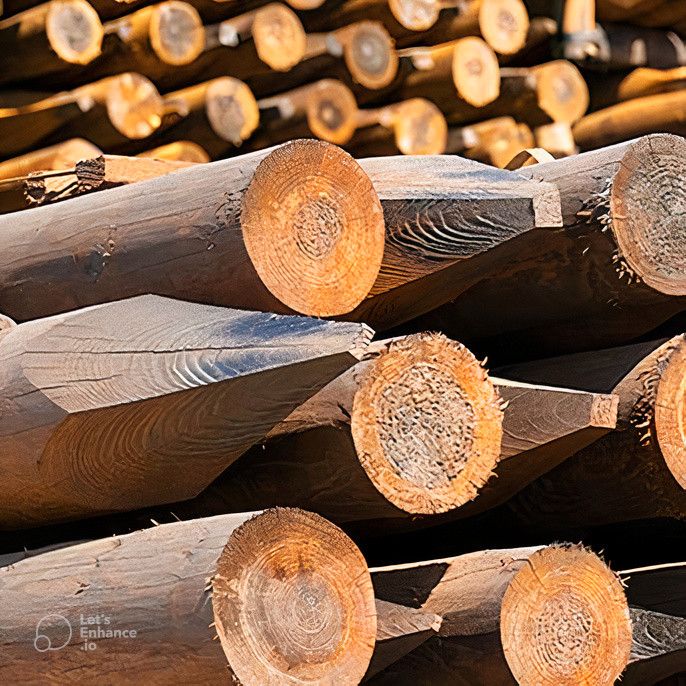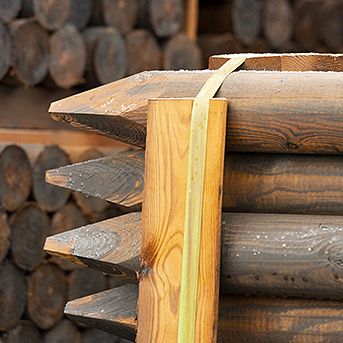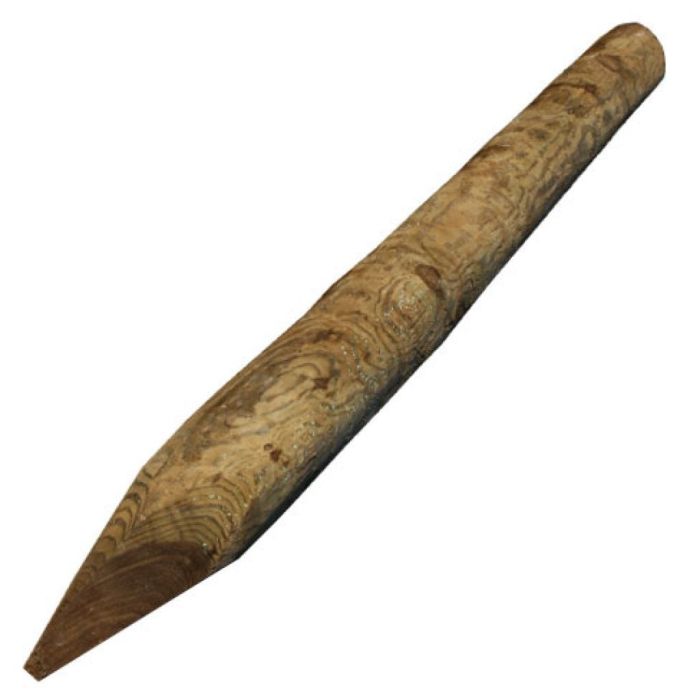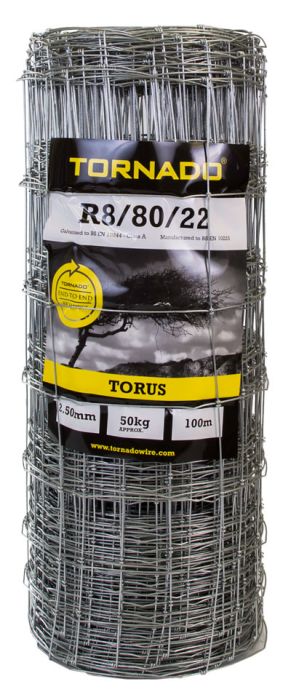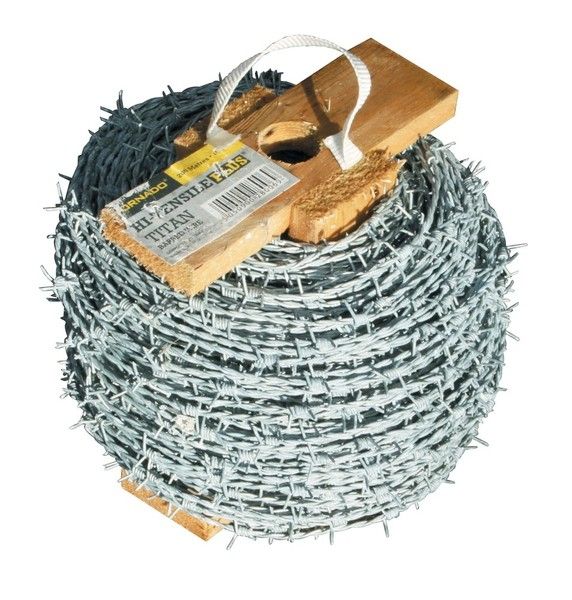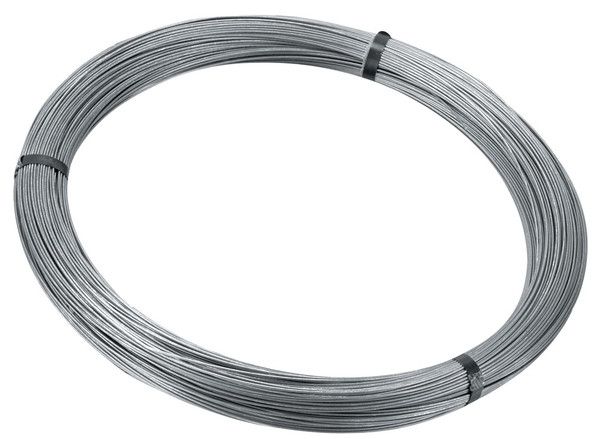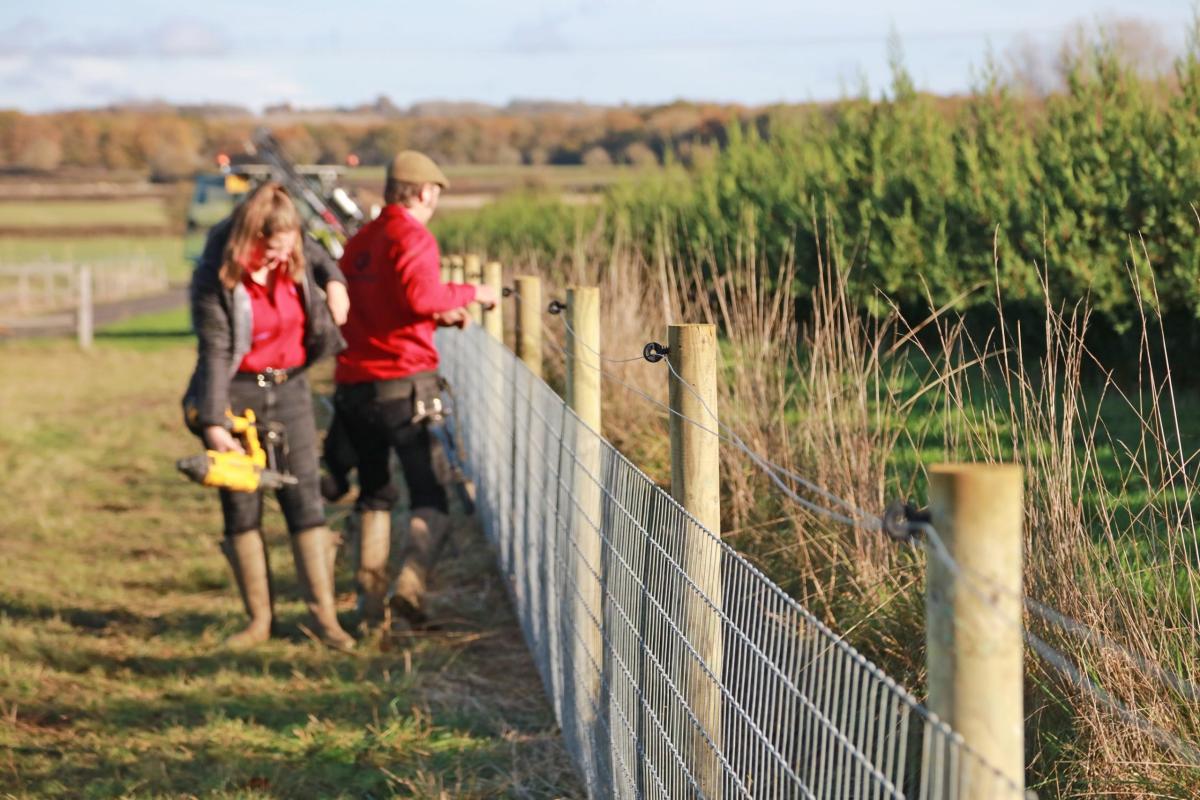
Countryside Stewardship.
At StowAg we want to make sure we keep the countryside working by supporting our customers the best we can. In order to do this, we’ve worked to bring together the updated grant information, making it easier for you to take advantage of the agricultural grant schemes this year.
The British government offer agricultural grants as a financial incentive for farmers, woodland owners, foresters, and land managers to look after, and improve the environment.
Before buying all the new fencing you need this year, it is important you research countryside stewardship grants, as they could save you thousands of pounds. This blog includes information on some of the main grants you could be eligible for, how to apply, and what products you can get from StowAg that qualify for these fencing grants.
These requirements apply to agreements with a start date of 2023. For any existing live agreements, you must adhere to the specification as outlined in your agreement.
FG1: Fencing & FG2: Sheep Netting
The FG1 Fencing grant has been implemented to help control livestock, protect environmental features and maintain habitats. FG2 also helps habitat management and protects environmental features from Livestock. Both of these grants are available for Countryside Stewardship Mid Tier, Higher Tier and Woodland Creation grants if one of the following applies:
- Where new fencing is required to meet the option grazing requirements in conjunction with habitat management or creation.
- To prevent water pollution caused by farming.
- To protect environmental features e.g. newly planted trees, buffer strips or field corners taken out of management.
| To Qualify for FG1 You Must: | Don’t: |
Remove all old fencing material before putting up the new fencing Use softwood timber that is fully peeled, coated with wood preservative and pressure treated, or treated with an HSE approved industrial wood preservative Put up a fence at least 1.05m high Use strands of galvanised 4 millimetre (mm) mild plain steel wire or 2.5mm barbed wire or high tensile Use enough strands to control the livestock Use straining posts that are at least 125mm by 125mm square (or have a 125mm top diameter) and are at least 2.1m long, or at least 2.4m long for metal fence posts Set the straining posts at least 1000mm into the ground, or at least 1100mm for metal fence posts, and no more than 150m apart if using mild steel or 600m apart for high tensile wire. place a straining post at every change of direction (horizontal or vertical) and at each end of the fence, with suitable bracing required to achieve stability Use struts that are 75mm by 75mm square, or have a 75mm top diameter, and 2.1m long (or at least 1.8m long for metal fencing) Set the struts at least 450mm into the ground (or at least 700mm for metal fence posts) and mortise them into the straining post. Do not secure by a nail alone Use intermediate posts that are 75mm by 75mm square (or have a 65mm top diameter) and 1.65m long (or at least 1.8m long for metal fencing) Set the posts at least 600mm in the ground (or at least 700mm for metal fence posts) and no more than 3.5m apart for mild steel, and 4.5 metres for high tensile steel Make sure that all work meets the relevant British Standards | Attach the fence to trees or hedgerows Block or restrict access to open access land Hard staple the wire to intermediate posts. The wire should be a running fit so it can move, contract and expand in different temperatures |
With the FG1 grant, you will be paid £6.34 per metre.
| To Qualify For FG2 You Must: | Don’t |
| Remove all old fencing material before putting up the new fencing Use softwood timber that is fully peeled, coated with wood preservative and pressure treated, or treated with an HSE approved industrial wood preservative, to comply with Use Class 4 as defined in BS8417:2014 ‘Preservation of Wood - Code of Practice’. You can also use untreated durable timber as set out in the Forestry Commission guide to forest fencing. As an alternative to wooden fence posts, you can use metal fence posts. For Higher Tier you should agree this with your Natural England Adviser or Forestry Commission Woodland Officer Put up a steel wire mesh fence at least 1.05m high (finished height). Use additional strands of galvanised steel wire (plain or barbed) if you need extra height Use straining posts that have a top diameter of at least 125 millimetre (mm), or are 100mm by 100mm in cross-section when sawn Make sure the straining posts are 2.1m long, or are at least 2.4m long for metal fence posts Place the straining posts no more than 150m apart if you use mild steel line wire, or 600m apart for high tensile wire Use a straining post at every change of direction (horizontal or vertical) and at each end of the fence Use struts that have a top diameter of at least 75mm, or are 75mm by 75mm when sawn Make sure the struts are 2.1m long or at least 2.4m long for metal fencing Mortice struts into the straining post at an angle of no more than 45 degrees. Do not secure by a nail alone Use intermediate posts that have a top diameter of at least 65mm, or are 75mm by 75mm when sawn Make sure the intermediate posts are 1.65m long (or at least 1.8m long for metal fencing) and space them no further than 3m apart if using hinge-jointed wire mesh. Or if you are using stiffstay wire mesh, you can space up to 6m depending on the conditions of the ground Make sure that all the work meets the relevant British Standards | Attach the fence to trees or hedgerows Block or restrict access to open access land Hard staple the wire to intermediate posts. The wire should be a running fit so it can move, contract and expand in different temperatures |
With the FG2 grant, you will be paid £7.47 per metre.
You Can't Use these Records If...
Construction is on historic or archaeological features as identified in the Historic Farm Environment Records (HEFER), or on a site where a fence has previously received a grant. To add, it won't apply to a site where a fence has previously received a grant.
Keep Records!
It is crucial you take photos of the work once it has been completed; you will need to supply them with your payment claim!
Be sure also to keep any consent or permissions connected to the work, invoices, or bank statements if an invoice is unavailable, and photos of the site before work is underway. You will be required to supply this on request.
How Can StowAg Help?
At StowAg we have a wide range of timber and fencing materials that will help you with your fencing repairs and grants this winter.
If you’ve visited one of our stores before, you’ll know we pride ourselves on always having large stocks of creosoted timber supplies, PTSW timber stakes and fence posts to ensure all of your fencing repairs are covered. Take a look at a few of the many products we offer that will help repair your fencing, and qualify for the FG1 & FG2 fence grants.
Norwood Creosoted Peeled Strainer Pointed.
The Creosoted Peeled Strainer is a high-quality Northern European timber found in the sustainable Scots Pine Forests. Due to the kind of weather conditions in this area, the trees can last for decades, gradually becoming weather resistant and even more durable over time. The long Northern European winters make the wood strong and tough; ideal for a range of occupations such as agriculture and construction where the wood needs to last.
Available in various sizes.
Norwood Creosoted Machined Strainer.
Creosoted timber can reduce the rate of horse cribbing and post-chewing. The creosote preservation process penetrates the heartwood meaning no other pine will last longer. This particular creosoted Norwood timber has a life expectancy of 30-40 years.
UC4 Green Peeled Strainer Post
This versatile strainer post is perfect for general farming. It has been green treated for protection against decay and insect attacks. This wood will darken with age and will offer a natural variance.
UC4 15-Year Timber is available in a variety of sizes and with quantity rates available.
HT8/80/15 Tornado Stockfence 32”
This wire is manufactured with high tensile wire; straining tighter than mild steel and therefore requires fewer intermediate posts. Another benefit to this stock fence is it won’t stretch with weathering, so you won’t have to worry about tightening it annually. It is available in rolls of 100/150/500-metre rolls with quantity rates available! Compliant with British standards
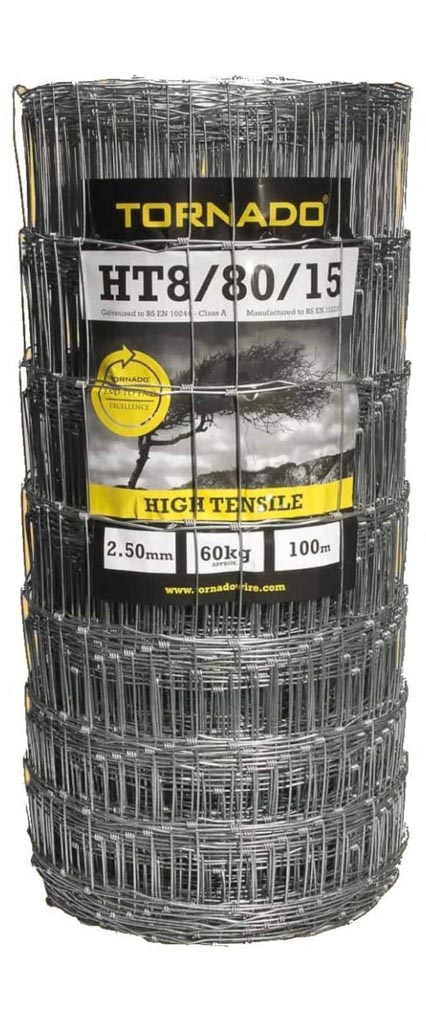
R8/80/22 Tornado LambSafe Stockfence 32”
Solid vertical wires with a Torus knot which is unobtrusive and does not have any sharp edges. Similar to the HT68/80/15, the LambSafe Stockfence is made from high tensile wire which strains tighter than mild steel thus requiring fewer intermediate posts. High tensile wire doesn't stretch over time to the extent that mild steel wire does.
Tornado Titan Barbed Wire Heavy Duty Heavy Tensile.
This galvanised heavy-duty barbed wire is ideal to add to the top of your fencing for that little bit of extra protection for your livestock, and if your fence is that few inches from qualifying for the FG1 and FG2 grants.
This barbed wire can help defend against downward compression from large animals. A very important addition to fencing by acting as a deterrent to unwanted climbing. The barbed wire comes on a neat and compact reel; it doesn’t require a wire unwinder when installed. Weathering will not stretch the wire, it will not require any further tightening. Providing two lines of barbed wire which run 50 mm and 150 mm above the fence will deliver optimum levels of protection to the fence.
Similar to the barbed wire, this galvanised plain wire is perfect for that little extra height if needed to reach the required 1.05-metre high fence. It is available in High Tensile or Mid Steel strength at various lengths.
We could be here until next year telling you about all of our other products to help you with your fencing repairs and grant schemes. If you want to check out all the other available options, visit our fencing and timber range by clicking here!
If you’re unsure if the item qualifies for the fencing grants, just refer back to this blog, or visit the Gov website for info on the FG1 and FG2 grants and how to apply. Alternatively, call us today and speak to one of our knowledgeable SQPs and get guidance on the products that are the best option for you.
Call one of our Fencing Specialists to obtain your quote or for any advice: 01451 830400
Other Blogs!
You might also want to check out our 'Wire Fencing Guide' to get more information and various Tornado wire fencing available at StowAg.
We used information from the related grant pages on the Gov website to create this blog. For further information, click on the links above to read more.

